Magnificent Altar Piece
July 8, 2019A stunning altar piece has been installed and blessed at the Australian Catholic University’s chapel in North Sydney.
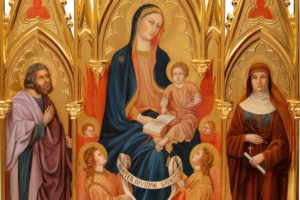
A stunning altar piece created in Medieval Italian Sienese style—the first of its kind produced in 400 years—has been installed and blessed at the Australian Catholic University’s chapel in North Sydney.
The artist who produced the magnificent triptych, depicting the Virgin Mary with Christ Child, St Joseph and St Mary of the Cross MacKillop, was present for its blessing by Archbishop Anthony Fisher OP and said it was “the most beautiful day” of her life.
Chiara Perinetti Casoni, an expert in crafting recreations of Sienese art from the 14thand 15th centuries, produced the full-sized altar piece in Siena, Italy, where she lives. She was deeply moved as it was blessed in its new home—ACU’s Our Lady Seat of Wisdom Chapel at the North Sydney campus…
Please continue reading this recent article by Catherine Sheehan from The Catholic Weekly which we felt would be of interest.
A Celebration of Hope
July 7, 2019On 19 March 2019, as a college community, St Joseph’s Catholic College, East Gosford celebrated our patron saint’s feast day.
 Saint Joseph’s Day incorporated the theme of Hope through an experience of Asylum Seekers and Refugees in our local community and beyond. We began in period one with home room activities in which we created Freedom Birds and Wings of Hope, decorating them and writing our pledges of support and hope for the future of asylum seekers and refugees.
Saint Joseph’s Day incorporated the theme of Hope through an experience of Asylum Seekers and Refugees in our local community and beyond. We began in period one with home room activities in which we created Freedom Birds and Wings of Hope, decorating them and writing our pledges of support and hope for the future of asylum seekers and refugees.
In period two, our girls were afforded the opportunity to listen to two guest speakers one being a representative from Northern Settlement Services, Nellie, and the other who was a refugee from our local area. They both shared their personal stories and their experience of what hope means to them through a speech and a Q&A session with the College Captains. During periods three and four, we celebrated the legacy of Saint Joseph’s Day through Mass lead by our college leaders and Father Greg.
Our celebrating didn’t stop there but continuing through lunch, we enjoyed culturally diverse cooked meals provided by our lovely staff for our girls as well as music played by our talented students. Through this our college community united as one in hope under the freedom birds that were hung across our main yard. By providing these meals, this demonstrated the care and support our staff give to students – just as Joseph unconditionally supported his family.
To conclude our fun-filled day of celebration, during periods five and six, students participated in our annual house competitions. These consisted of different year groups versing each other as houses in activities that reflected our theme. For example, our Year 12 students competed in a competition in which students had to carry buckets of water on their heads and fill a tub first to win house points. The positive atmosphere created and the extensive support showcased by our college community, truly demonstrated our theme as we stand for justice and hope of Refugees and Asylum Seekers #justice4refugees.
Sophie Scott, Eliza Middleton and Zoe Rechberger-Carson
St Joseph’s Catholic College Captains 2019
View photos of the celebration in the gallery below:
Photos provided by St Joseph’s Catholic College, East Gosford. Used with permission.
Vale Deacon Boniface
We remember Deacon Boniface (1936 – 2019), a man who lived the spirit of this year’s NAIDOC theme: ‘Voice. Treaty. Truth. Let’s walk together for a shared future.’
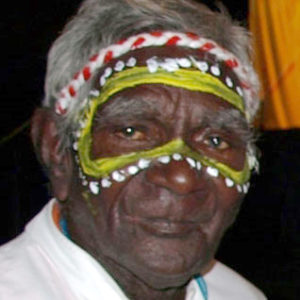 Deacon Boniface Perjert was born in Port Keats, Northern Territory in 1936 to Perdjert his Muripatha father and Bullimbi, his Moigabin mother. Boniface was the first baby baptised at the mission run by the Missionary of the Sacred Heart (MSC).
Deacon Boniface Perjert was born in Port Keats, Northern Territory in 1936 to Perdjert his Muripatha father and Bullimbi, his Moigabin mother. Boniface was the first baby baptised at the mission run by the Missionary of the Sacred Heart (MSC).
He blazed a trail for Aboriginal and Torres Strait Islander Catholics to follow as he not only walked between two worlds – Catholic and Traditional – he brought them together. His words and actions spoke loudly to the members of the Wadeye Community – of which he was a deeply loved and respected Elder – but also to the Catholic hierarchy with whom he shared his wisdom on many official occasions.
He was ordained the first permanent Deacon in Australia at Port Keats on 19 July 1974 by Bishop John O’Loughlin, the Bishop of Darwin and in November 1986, Boniface assisted at the Mass celebrated by now Saint John Paul II in Alice Springs when he delivered the famous address to the Aboriginal and Torres Strait Islander people. He again assisted Saint John Paul II at the beatification Mass for Mary MacKillop in Sydney in January 1995.
A quote from Deacon Boniface:
Reflect more on the life of Vale Deacon Boniface with a tribute by the NATSICC (National Aboriginal and Torres Strait Islander Catholic Council) below:
Article and photo obtained from NATSICC (National Aboriginal and Torres Strait Islander Catholic Council). Used with permission.
Living from the Heart
July 6, 2019This month, as we continue mining the gold from Sue and Leo Kane’s Little Brown Book Too, we are invited to ponder a simple story about Mary MacKillop which provides yet another example of how she lived from the heart.
There were no limits to her love… how do I measure up?
Mary had managed only a very early cup of tea for breakfast before she arrived at the convent in the afternoon. The Sisters had prepared a meal for her. Sister Borgia Healy tells the story:
Just as she was about to sit to the table, a knock came to the door. I went to see who was there and a poor, half-starved, baby clothed old man stood before me. “Would you give me something to eat, miss?” he said. “I can get no work in this town, not anything to eat. I’m very weak.”
Mother Mary followed me to the door, and when she saw the man, she said:
For Mary, that hungry old man was Jesus coming to her door. She often told her Sisters:
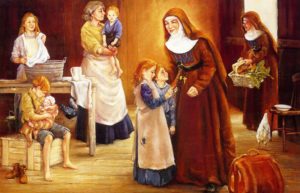 Her compassion sprang from her spirit of love and self-forgetfulness.
Her compassion sprang from her spirit of love and self-forgetfulness.
It knew no boundaries!
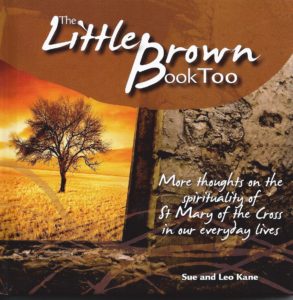 The above is an extract from The Little Brown Book Too (pages 32-33)
The above is an extract from The Little Brown Book Too (pages 32-33)
© Sue and Leo Kane 2011
Used with the kind permission of the publishers, St Paul’s Publications
Available online and from some Mary MacKillop Centres.
Download the print version of this reflection (PDF)
Image of Mary, Sister and poor family: Artist unknown
Fr Julian: Man of Words – Letter Six
July 5, 2019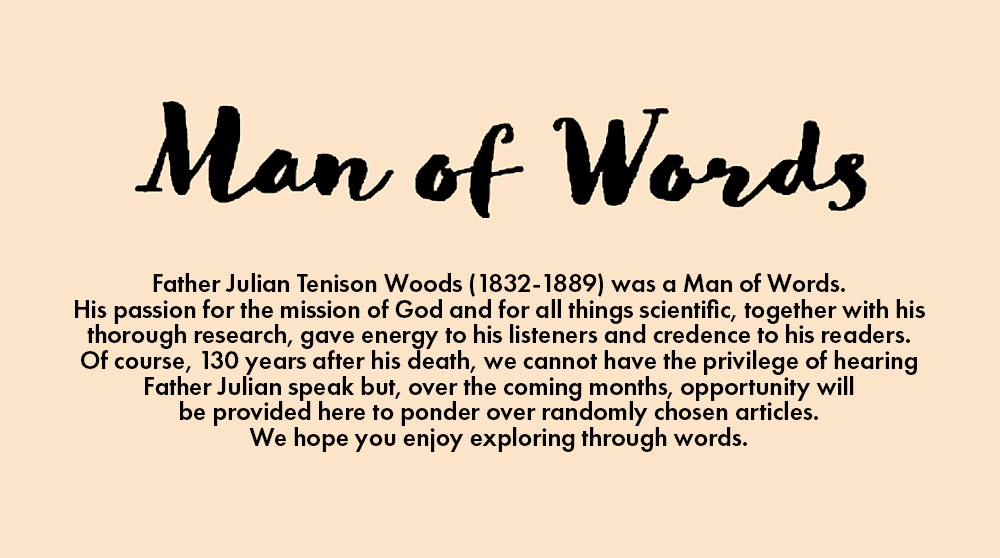
Father Julian Tenison Woods wrote many articles on scientific subjects.
This month I present an example of the detailed research and time that must have gone into his writing: Palaeontology of New Zealand Part 4, Corals and Bryozoa of the Neozoic period in New Zealand. [i]
This is not a paper that I expect too many people may read in its entirety. Indeed it may not be a subject of interest to too many. It is, however, a valuable insight into the scientific mind of Father Julian and, I hope, may lead the reader into finding other articles of more personal relevance. It certainly shows Father Julian’s ability to apply his observations to areas unfamiliar to his experience.
Mount St Joseph’s Former Students Excel
July 4, 2019“Mount St. Joseph Girls’ College (MSJ) breathes life into contemporary learning, inspires girls to strive to fulfil their goals and celebrates their many talents.”

Here are a couple of examples of past students’ achievements:
Kelly and Lacrosse: Former MSJ student, Steph Kelly (MSJ College Sports Captain 2016) is living her dream and goal of playing lacrosse at the highest level. Steph played in the National Lacrosse Championships over the June long weekend for the victorious Senior Victorian Women’s Team. Victoria defeated South Australia 16-5. Steph was the top scorer in the championship.
Steph is currently on a break from her lacrosse scholarship at Saint Joseph’s University in Philadelphia USA. In Steph’s own words:

Sue Safornos, Sports Coordinator: Supporting Steph to achieve her goals is MSJ’s sports coordinator, Sue Sofarnos. Sue has mentored Steph since she was a student at MSJ and as Steph’s coach in the Under 15 Victorian team in 2012-2013. Sue coached Steph to victory in the Senior Victorian Women’s team. Following in the family tradition, Sue’s daughter Hayley also played in the recent National Championship, being named Most Valuable Player. Sue has just been named as coach for the All Australian Lacrosse Team.
Trudi Camilleri – West End Star: Former MSJ student Trudy Camilleri is now starring in the London West End Theatre production of Queen of the Mist. Trudi is an amazing lady. On 16 August 1993, whilst at MSJ, Trudy was dragged under a bus and had both her legs crushed. She recovered and came back the following year to complete her Victorian Certificate of Education. Trudi went on to study at the Melbourne Conservatorium and even came back to MSJ to teach singing for a while.
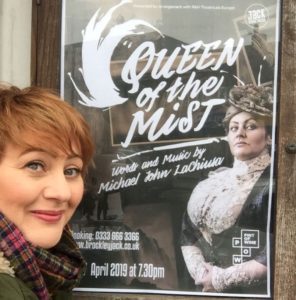
Trudi has been living in London for the past 15 years and became involved in Musical theatre about five years ago. Queen of the Mist is a role that was written specifically for her. She is currently in the recording studio recording the cast soundtrack.
We take pride in these former students and congratulate them on their success.
Nicole Magee,
Marketing & Communications Officer
Mount St. Joseph Girls’ College, Altona West, Victoria
Footnote: Heading quote sourced from the MSJ Website
Photos supplied by Mount St Joseph college. Used with permission.
Media Statement: CRA urges Government to do more for Asylum-Seekers and Refugees
July 3, 2019Catholic Religious Australia (CRA) applauds the decision of the Australian Government to rescue eight Australian orphans trapped in Syrian refugee camps.
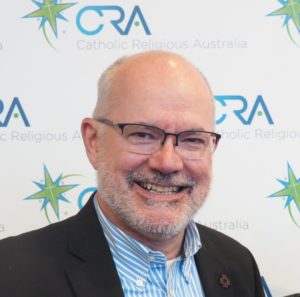
Catholic Religious Australia (CRA) applauds the decision of the Australian Government to rescue eight Australian orphans trapped in Syrian refugee camps in the recent secret operation. CRA urges the Government to continue to act courageously on behalf of refugees, especially young people.
There are approximately 50 Australian women and children remaining in Syrian refugee camps who are now suffering a backlash from the rescue operation. Accused of being traitors, their lives are in danger. The repatriation of these endangered families needs to be a priority for the Australian Government, for the sake of the physical and psychological safety of innocent children.
Media Statement: CRA urges Government to do more for Asylum-Seekers and Refugees
Mary MacKillop: Patron of Brisbane Archdiocese
June 29, 2019Mary, Patron of the Brisbane Archdiocese
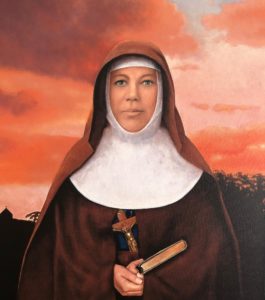
Mosquito plague, high humidity and heat greeted Mary MacKillop and her Sisters when they arrived in Brisbane on New Year’s Eve 1869 – just three and half years after the foundation of the Congregation in Penola. What warrior women they were, with hearts set on fire for God’s mission. Little did they know what indescribable challenge and pain Queensland would be for Mary and the Congregation.
Mary and the Sisters had been invited by Bishop Quinn to set up schools in Queensland, so they came well equipped with the proven Woods-MacKillop system of parish-based schools. They immediately hopped in, opened schools in Brisbane and very quickly expanded their presence to other places in country Queensland.
The story of the journey between 1869 and when the Archbishop John Bathersby petitioned Rome to make Mary MacKillop the Patron of the Archdiocese is told here.
